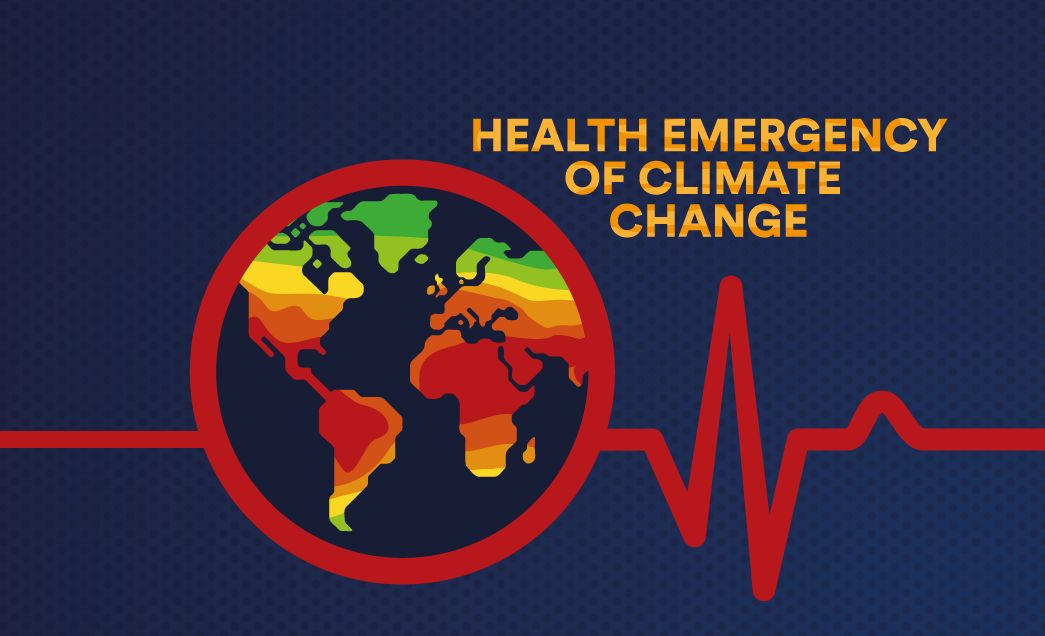Handout: Health Risks of Climate Change in Nevada
Here’s a one-page summary developed by the liaison to Senator Cortez-Masto in response to her request for info on how climate change impacts Nevadans’ health.
The one-pager is downloadable here in .pdf format, with its nicely annotated endnotes hyperlinked to the reference. The following is the body of the handout, w/o hyperlinked endnotes:
Health Risks of Climate Change in Nevada
The Lancet Countdown for 20 years has rated climate change as one of the world’s largest health threats, threatening to undo 50 years of gains in public health. Climate-related health vulnerabilities impacting Nevada include extreme heat, air pollutants, drought, wildfires, infectious diseases, and migration pressures.
Heat. The US ranks among the top countries for vulnerability to heat-related illness and death, with an estimated 19,000 deaths in people aged 65+ from 2014-2018 (1). In 2019 alone, extreme heat resulted in 2 billion hours of lost work in the US (1). Heat waves are associated with suicide and mental health crises (2), as well as violent crimes (3). Reno is currently the fastest warming city in the US, and Reno and Las Vegas consistently rank in the top 5 metropolitan areas for increased warming (4). Heat accumulates in low-lying, poorly shaded heat islands, which greatly amplify underlying temperatures. Las Vegas has the largest heat island effect in the nation, putting low-income populations of color at greatest risk (4).
Air pollution. Fossil fuel burning is the largest source of dangerous air pollutants, particularly ozone and fine particulates. Short-term exposure to fine particulate pollution is clearly linked to mortality (5), and is now believed to directly contribute to more than 10% of all deaths in the U.S. (6). Reno/Sparks and Las Vegas both rank in the top 25 cities in the US for short-term fine particulate exposure (7). Las Vegas ranks among top cities for ground-level ozone pollution (7). Ozone has long been known to cause respiratory symptoms such as asthma and chronic obstructive pulmonary disease. Recent evidence also links chronic ozone pollution to low birth weight and preterm birth, metabolic diseases such as diabetes, and neurologic problems such as cognitive decline, attention and learning difficulties in children (7). Both pollutants have been linked to higher rates of violent crime in communities across the US (8).
Drought. Colorado River flow could decrease by an additional 20% by 2050 (9), imperiling food supply and causing an existential crisis for water supply in Southern Nevada. Wildfires. US residents have suffered greatly increasing wildfire exposure, 470,000 additional days per year in 2016-19 compared to 15 years previously (1). Wildfires cause immediate direct risk to firefighters, residents and health systems in affected communities, as well as longstanding mental health effects in displaced people. Myriad risks from highly toxic smoke pollutants cause acute respiratory, perinatal and cardiovascular events (10). Emergency room visits for asthma increase in Reno during days with wildfire smoke (11). More than 1.2 million Nevadans (46% of the state’s population) live in an area at increased risk for wildfire (4).
Climate-sensitive infectious diseases. Warming conditions increase the range and frequency of several formerly rare diseases in Nevada, including coccidioidomycosis (Valley Fever), Lyme disease in Northern Nevada, and mosquito-borne infections including West Nile virus and Zika (12), (13), (14).
Migration. Increased extreme weather events abroad risk uncontrolled migration and refugee pressures that exceed US and state capacity to respond. Without mitigation, at least 145 million coastal residents will be forced to migrate by 2050 (15). One in five Nevadans is an immigrant, many from highly climate-impacted countries in Central America, Mexico and the Philippines(16). Uncontrolled migration may strain housing, education and social services.
References
1. 2020 Report of the Lancet Countdown on health and climate change. Lancet 2021; 397: 129–70
2. Thompson, et al (2018). Associations between high ambient temperatures and heat waves with mental health outcomes: a systematic review. Public Health 161,171-191.
3. Ranson, M. (2014). Crime, weather, and climate change. J. Environ. Econ. Manage, 67,274–302.
4. Statesatrisk.org
5. Liu, et al. Ambient air pollution and daily mortality in 652 cities. N Engl J Med 2019;381:705-15.
6. Vohra et al. Global mortality from outdoor fine particle pollution generated by fossil fuel combustion: Results from GEOS-Chem. Env Research 2021;195.
7. 2020 State of the Air report, American Lung Association, lung.org/research/sota.
8. Berman, et al (2019). Acute Air Pollution Exposure and the Risk of Violent Behavior in the United States. Epidemiology, 30(6), 799–806.
9. Spiegel J. yaleclimateconnections.org, Jan 12, 2021.
10. Xu et al. Wildfires, global climate change, and human health. N Engl J Med 2020; 383:2173-2181.
11. Kiser et al, 2020. Particulate matter and emergency visits for asthma: a time-series study of their association in the presence and absence of wildfire smoke in Reno, Nevada, 2013-2018. Environ Health 92(2020).
12. United States Environmental Protection Agency, Climate change indicators-West Nile virus. epa.gov
13. Southern Nevada Health District Disease Statistics, southernnevadahealthdistrict.org
14. CDC, cdc.gov
15. Podesta J. The climate crisis, migration, and refugees. The Brookings Institute, brookings.edu, 2019.
16. American Immigration Council. Americanimmigrationcouncil.org.

